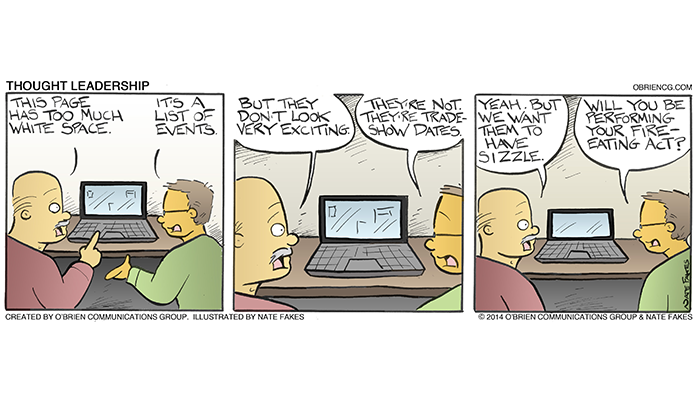Here’s a partial list of the things most companies say they want on the pages of their websites: Sizzle. Fashion Shows. Popularity contests. Pizzazz. Things that make the boss happy. The kitchen sink and all the attendant plumbing. Cool stuff.
And here’s Today’s Pop Quiz: Does anyone see clear presentation of meaningful information on that list? Ay, there’s the rub.
At this point, it might be prudent to remind ourselves of two definitions:
target audience: noun
a particular group of people, identified as the intended recipient of a message, regardless of medium
prospect: noun
1. a potential or likely customer, client, etc.
2. something in view as a source of profit
Speaking in the ideal, the identification of the target audience should help with the identification of the prospect. And the identification of the prospect should help with the identification of the prospect’s needs. But speaking in the real, the people at whose behest websites are created frequently mistake themselves for the target audience. That’s where the trouble begins.
By violating Immutable Communication Rules 1 through 3, people who want sizzle, fashion shows, popularity contests, pizzazz, things that make the boss happy, the kitchen sink and all the attendant plumbing, and cool stuff are putting themselves before their businesses. And by ignoring the needs of their prospects, they’re putting their likes and dislikes before the objectives of their businesses — presuming, of course, the objectives of their businesses are to make money.
If that’s an errant presumption, it can be ignored as blithely as target audiences and prospects are ignored.

